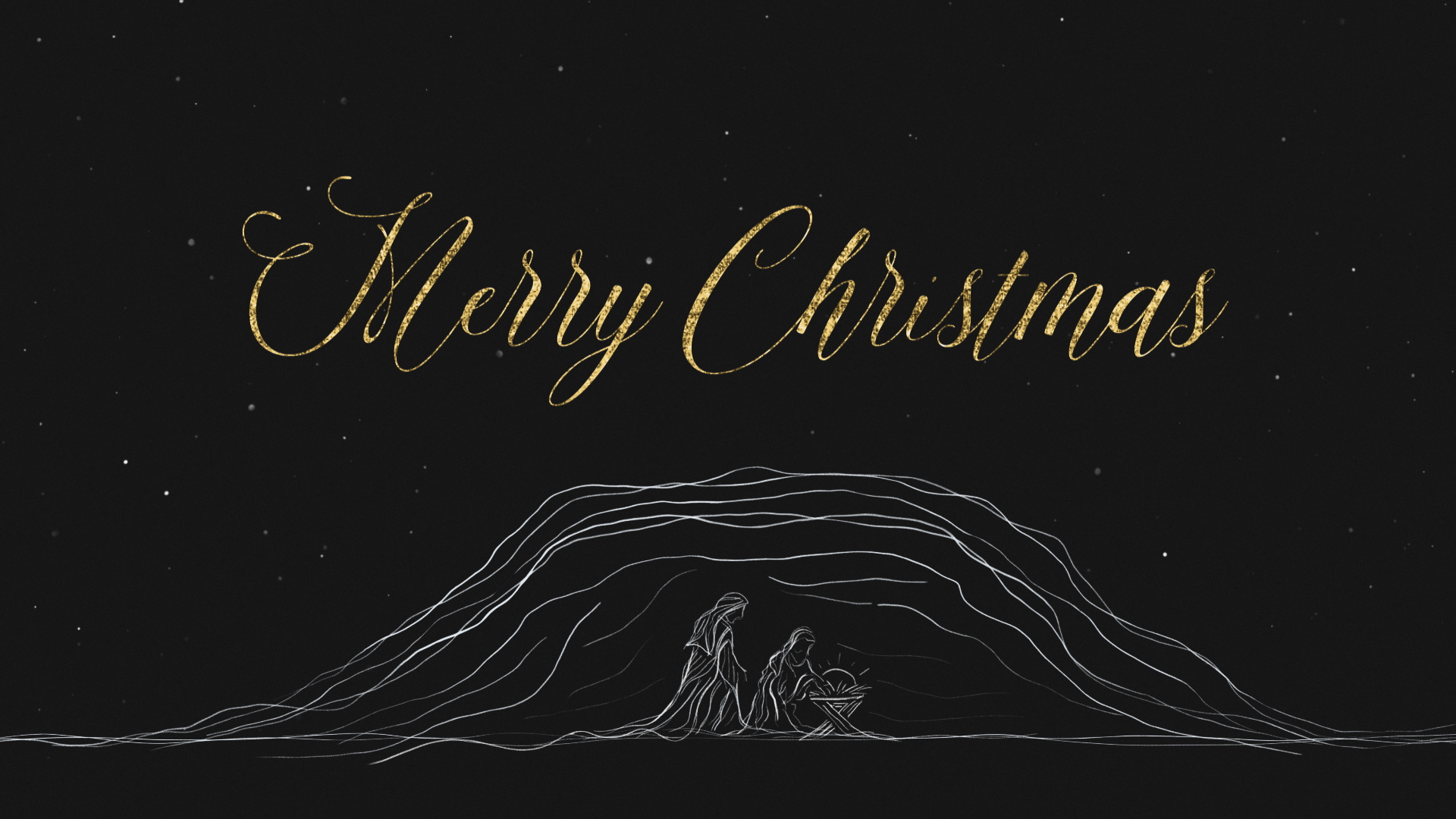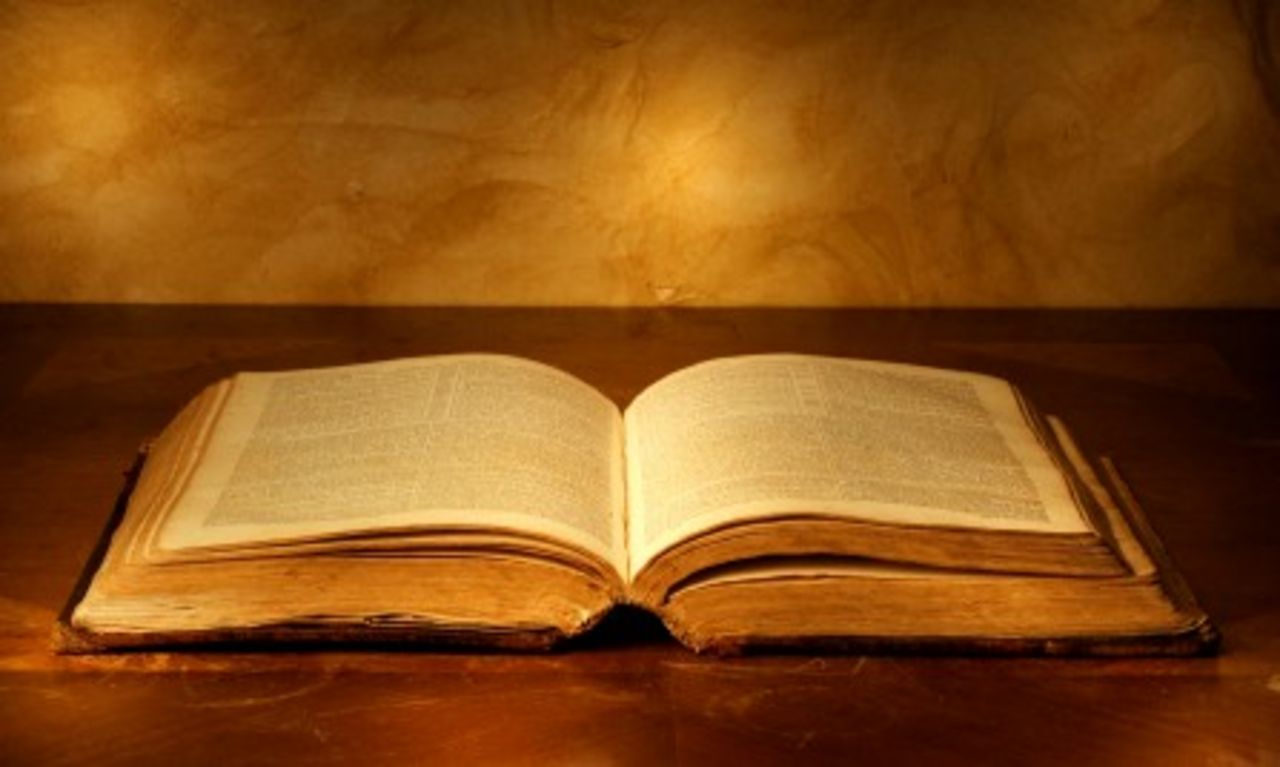I recently had a remarkable
conversation and learning experience on the nature and development of the
Bible. You would think everyone would
know how the Bible came about, but while it intuitively feels we all know, but it’s
actually more complicated than you imagine.
For instance, why do Catholic and the other Apostolic Churches have more
books in the Old Testament than Protestants?
Protestants claim that Catholics
added books, while Catholics claim that Protestants took them out. This conversation started on a conservative
social media I belong to, Ricochet. The original post was highlighting Hanukkah and
made a reference that Bibles don’t even refer to the event from which a number
of Catholics retorted that their Bibles most certainly do. The event of Hanukkah is told in the First
and Second books of Maccabees, both of which are part of the deuterocanonical texts
contained in Catholic Old Testaments but not in Protestant Old Testaments, and
ironically not included in Jewish Bibles, referred to as the Tanakh.
Why are there books of the Old Testament
in Catholic Bibles and not in Protestant and more astonishingly Jewish Bibles? I explained for to those that didn’t realize,
but in the course of the conversation I learned something really amazing. What we have as the Jewish Bible is not what
actually was read (in Hebrew of course) 2500 years ago. The Hebrew Old Testament is a reconstruction
put together some 900 years after Christ died.
We’ll get to all that.
So these series of posts are my
portion of an extended conversation on the history of the Bible discussed on the
post “Canceling God: Hanukkah and Cancel Culture” at Ricochet. I’m not sure if no-members can access that
post on Ricochet, but perhaps you might.
The post started off innocently enough but unfortunately a couple of us
wound up hijacking the conversation. My
main interlocutor is a fellow whose website name is St. Augustine. Despite his name, St. Augustine is Protestant
with a particular love for the writings of the original St. Augustine. My interlocutor is a scholarly fellow (I
thought he had a PhD but I learned otherwise) and from an Evangelical
background. He’s more of an intellectual
than a fundamentalist, and scholarly rather than pastoral. We had a genial and charitable conversation
bringing out our two viewpoints.
I am not reposting everything
said. I am mostly focusing on my side of
the conversation. It would be too much
to recreate everything, and plus I only feel ownership to my side of the
writing. The actual Ricochet discussion will be in regular font and when
I step out of that discussion, such as this, I will be in italics. I project to complete this in four
posts. I’ll define some terms up front.
Septuagint:
Greek translation of the Old Testament 200-300 years B.C.
DeuterocanonicalBooks: The Old Testament in Catholic Bibles but
not in Protestant.
Vulgate Bible: The Latin translation of the Septuagint & New Testament by St. Jerome in the 4th Century A.D.
MasoreticText: The Hebrew Bible reconstructed by the Masoretes around 900 A.D.
I’m going to start with my comment
explaining why the deuterocanonical exist in the Catholic Bibles.
Manny:
Reading through the
comments it seems that most people don’t understand how the Bible cannon
differences between Protestants and everyone else came about. Catholics are not
the only Christian groups that contain what some call the deuterocanonical
books. All Christians except most Protestants include them.
What is counter-intuitive
and I think confuses most people (and it confused me before I learned this) is
that Christians actually had an Old Testament cannon before Judaism. There was
no Jewish cannon before the second or third century AD. Notice “AD.” Back in
the third century BC (notice “BC”) there was a large Jewish diaspora across the
Greek speaking world, remnants of Alexander the Great’s empire. In time those
Jews wanted a copy of the scriptures they could read in what had become their
native Greek language. So across the Greek speaking world seventy rabbis
translated as many of the scriptures as possible. This ultimately included the
deuterocanonical books. But remember, there was no official Jewish list of
Books that had to be included. That Greek translated Bible came to be known as
the Septuagint, which stands for the number 70, which was the number of
translators.
So by the time of Christ
a couple of centuries later, the Greek speaking Jews used the Septuagint. The New Testament authors all traced their
quotes from the Septuagint. When you see
Christ quote from the OT in the NT, the phrasing is identifiable to the Septuagint. Mark, Matthew, Luke and John had the
Septuagint available as they constructed their Gospels. Even in the Epistles, Paul and the other
letter writers are quoting from the Septuagint.
The Jewish cannon, known
as the Tanakh, came about after the diaspora resulting from the destruction of
the Temple and Israel in 70 AD by the Romans.
After a couple of hundred years, somewhere in the second or third
century AD, they put together an official cannon, and it did not include the
deuterocanonical books. What I learned
last week inclusion was based on whether those books were originally in Greek
or Hebrew. That was for Judaism to
decide but all Christians at that point had already a cannon.
Now, come 1500 years
later and Martin Luther in creating a Bible for his new church is faced with a
problem. If he includes the Maccabee books
he is faced with the theological problem of praying for the dead. Here’s what 2
Mac 12:42-46 says:
42 Turning to
supplication, they prayed that the sinful deed might be fully blotted out. The
noble Judas exhorted the people to keep themselves free from sin, for they had
seen with their own eyes what had happened because of the sin of those who had
fallen.
43 He then took up a
collection among all his soldiers, amounting to two thousand silver drachmas,
which he sent to Jerusalem to provide for an expiatory sacrifice. In doing this
he acted in a very excellent and noble way, inasmuch as he had the resurrection
in mind;
44 for if he were not
expecting the fallen to rise again, it would have been superfluous and foolish
to pray for the dead.
45 But if he did this
with a view to the splendid reward that awaits those who had gone to rest in
godliness, it was a holy and pious thought.
46 Thus he made atonement
for the dead that they might be absolved from their sin.
Why is that
important? Luther fought the Catholic
Church over Purgatory and praying for the dead.
He could not keep that in or he would have been slammed dunk proven
wrong. Notice what it says, there was a
collection of money to be taken for prayers for the dead to Jerusalem. That’s no different than Catholic prayers for
the dead given in churches. Not only
that, it justifies the theological concept of purgatory. If there is no purgatory, then there is no
reason to pray for the dead. Either
you’re already in heaven, and so no prayers are needed, or you’re in hell and
no prayers will help. Indeed, I do not
believe that Protestants are theologically supposed to pray for the dead. So using the excuse that Judaism had excluded
these books, Luther dropped them altogether.
But by doing so, he took out the link between quotes from the NT to the
old. But the deuterocanonical books (as
well as praying for the dead and the notion of purgatory) were there from the
first century.
###
Manny:
But remember, there was
no official Jewish list of Books that had to be included.
Saint
Augustine
There didn’t have to
be. Neither was the NT official until
centuries after, or the Deuterocanon/Apocrypha until the Reformation era.
Manny:
The official date of the
NT can be traced to 382 at the Council of Rome.
But like most official proclamations in the Church, those official
proclamations come quite a bit of time after it was widely accepted. The 27 books of the NT can be traced to
Clement of Alexandria (150-215), though he actually included more than the
27. But the entire canon was officially
declared in 382. From Wikipedia:
The Catholic Church
considers that in the Council of Rome in 382 AD, under the Papacy of Damasus I,
was defined the complete canon of the Bible, accepting 46 books for the Old
Testament, including what the Reformed Churches consider as deuterocanonical
books, and 27 books for the New Testament.[89] Based in this first canon, Saint
Jerome compiled and translated the 73 books of the Bible into Latin, later
known as the Vulgate Bible version, which has been considered during many
centuries as one of the official Bible translations of the Catholic Church. The
Synod of Hippo (in AD 393), followed by the Council of Carthage (397) and the
Council of Carthage (419), also explicitly accepted the first canon from the
Council of Rome; these councils [65] were under significant influence of
Augustine of Hippo, who also regarded the Biblical canon as already
closed.[66][67][68] The Roman Catholic Council of Florence (AD 1442) confirmed
the first canon too,[73] while the Council of Trent (AD 1546) elevated the
first canon to dogma.[90]
So the Vulgate at the
time of Luther already had the deuterocanonical books.
###
Manny:
The common Protestant
talking point is that Catholics put them, “added books to the Bible.” That is a
lie. The reality is that Protestants took them out.
Saint
Augustine:
And yet the Catholics
call them the Deuterocanonical because their canonicity was formally recognized
later. It’s not as simple as “The
Catholics added them!” Nor is it as simple as your account. No Protestant ever opted
to take anything out of the Bible.
Manny:
Yes, of course and to be
fair it depends on the spin you accept.
Protestants say he did it because he believed it was the right
thing. (Actually I’m not sure why. What was Luther’s justification?) Catholics say he did it to fit his new
theology. But here are a couple of more
curious facts. (1) Luther also wanted to
delete four books from the New Testament: James, Jude, Hebrews, and Revelation,
all of which contain theology which opposed his. He wanted to delete four books of the New
Testament! Can you imagine how the
Protestant world would go crazy if a pope declared four books of the NT to no
longer be canonical? Whoa. Luther was prevented. Remember there were political
implications. He was being protected by
various aristocracy of the German city states that wanted a break from
Rome. Deleting NT books would have
caused an uproar. He ultimately
didn’t. (2) Luther wasn’t above
manipulating the meaning of his translation.
He added the word “alone” to faith in Romans 3:28. He insisted keeping it in after it was
pointed out, declaring it was implied.
No he altered the text to support his claim of justification by faith
alone. If you look in today’s Protestant
Bible translations, “alone” is no longer there.
It has been corrected, but Luther caused so much division.
So you can believe
whatever spin you like about Luther, but when I look at the totality of his
translation decisions, it appears to me he was adjusting it to fit his
theology.
Manny:
Where’s the evidence they
[NT writers] rejected it?
Saint
Augustine:
I don’t know. Occam’s
Razor, I guess, plus the grand total of zero quotations from the Apocrypha in
the NT. (Or did I miss a quotation?) And the occasional reference to the OT
Scriptures in ways that apparently reference the entire Tanakh but not the
Apocrypha. (Although I have learned of interesting objections to that last
one!)
Manny:
What do you mean that’s
all I have? Matthew, Mark, Luke, and
John and the others quoted from the Septuagint.
The Septuagint included the deuterocanonical books. There is no evidence they rejected them. If anything Occam’s Razor says they accepted
them.
Manny:
I don’t know what you’re
trying to argue over. The Church had
established all 72 books as canonical at the Council of Rome in 382. In the
subsequent couple of decades it was defined in the Eastern side of Christianity
as well. It was accepted by all for the
next 1100+ years. No one in the
Christian world disputed using the Septuagint.
Perhaps they disputed what the Septuagint contained, but the Septuagint
was the Christian standard. 1100 years is
about from Moses to Christ. That’s pretty defined. That’s as authoritative as it gets in the
preprinting press world.
Manny:
OK, so you don’t accept
the NT writers all choosing the Septuagint, you don’t accept the various Church
councils authorizing the Septuagint (and which other Church Councils do you not
accept?), you don’t accept all the Apostolic Churches using the Septuagint as
canon, and you don’t accept 1100 years of unchallenged precedent, then where
did the Holy Spirit go wrong? After all
Matthew, Mark, Luke, and John were all led to the Septuagint. Christ says “But when he comes, the Spirit of
truth, he will guide you to all truth” (Jn 16:13 and elsewhere). Did the Holy Spirit lead the Gospel writers
astray? After all, the Hebrew texts could
have been available to them. It would
not have required heroic effort for them to go to them. They were available at the Temple.
And before you say, it
didn’t matter which translation they went to, yes it did. By directing all four to the Septuagint it
established the prayers for the dead and therefore purgatory as dogma. All four is not an accident. Did the Holy Spirit after just some twenty to
thirty years after Christ’s crucifixion guide the NT writers incorrectly?
Saint
Augustine:
But I doubt that the
Apocrypha/Deuterocanon actually is part of the Septuagint.
Manny:
Oh I never imagined
that’s what you were referring to.
That’s why it kept going over my head.
I have never heard otherwise.
Where do you see anything to suggest they were not part of it? I’m certainly not a history of the Bible
scholar, but I have not come across that anywhere.
Saint
Augustine:
But as for the idea that
they weren’t–Ockam’s Razor ain’t a bad place to start. But since the LXX is a
translation of Scriptures, and since OT Scriptures are abundantly used in the
NT, then we have at least two other reasons of some interest:
–the grand total of zero
quotations from the Apocrypha/Deuterocanon in the NT. (Or did I miss a
quotation?)
–the occasional reference
to the OT Scriptures in ways that apparently reference the entire Tanakh but
not the Apocrypha. (Although I have learned of interesting objections to that
last one!)
This is a transition in the
conversation. While that first part
(above) dealt with the canonicity of the deuterocanonical books, this next part
dealt with the Masoretic text being reconstructed almost a millennium after
Christ.
Manny:
St A, I’ve been spending
all my free time today learning about the history of the various Bibles. I have to admit to you it is more complicated
than I have outlined in this thread. I’m
going to write up the complications in a post, but it may take me a little
while and possibly not by tonight. First let me address our questions
here.
Yes, there are quotations
or references from the Hebrew OT, referred to as the Masoretic Text, but the
statistics I found are the following. Of
the several hundred quotes and references in the NT, 20% are in common between the
Septuagint and Masoretic. Of the 80%
which are different, 90% are from the Septuagint and 10% are from the
Masoretic. I wonder if the NT writers
were sometimes using their memory of a phrase since 10% isn’t all that much. But it is not exclusively Septuagint. On that I can see then how you might hold to
your position.
As to Occam’s razor, no,
I still think Occam’s Razor supports the Septuagint. There are lots of OT books the NT didn’t
quote from. Because they didn’t quote
from the deuterocanonical ones doesn’t mean anything. The Septuagint was a bundle of all the books,
so Occam’s razor would say if they relied on the bulk of that bundle, then the
entire bundle was accepted.
Here’s a major fact I
learned today which expanded my perception and perhaps alters some of my
rationales, but I still believe the Septuagint should be the Christian text of
the OT. In the third century AD, Judaism only established
the canon of books, which books Judaism holds as scripture, not the official
text. But it did not agree on which of
the variations of the texts was canonical, and given the loss of Hebrew it made
the composition not so easy and straight forward. The official Hebrew text was fixed centuries
later, in the 9th century, known as the Masoretic Text. What we have as the Masoretic texts were an
assimilation of old manuscripts and oral tradition composed hundreds of years
later. So let me work on my comment that
brings all this together.
†












